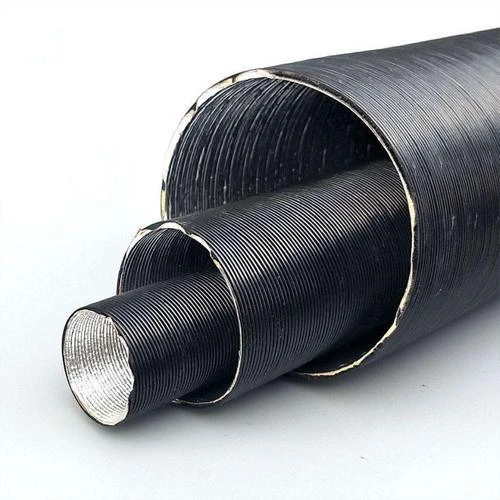high pressure lpg gas hose
Understanding High Pressure LPG Gas Hoses Importance and Applications
Liquefied petroleum gas (LPG) is widely used across various sectors, including residential, commercial, and industrial applications, thanks to its efficiency and versatility as a fuel source. High-pressure LPG gas hoses play a critical role in the safe and effective transfer of this gas in settings where high pressure is necessary. This article explores the importance, construction, applications, and safety considerations of high-pressure LPG gas hoses.
What Are High-Pressure LPG Gas Hoses?
High-pressure LPG gas hoses are specially designed hoses that facilitate the transportation of LPG from one location to another, often from storage tanks to various appliances. These hoses are engineered to withstand high pressures typically found in LPG systems, ensuring that gas is conveyed safely and efficiently. They are available in various lengths and diameters, making them suitable for diverse applications ranging from domestic cooking to industrial processes.
Construction of High-Pressure LPG Gas Hoses
The construction of high-pressure LPG gas hoses involves several key materials and components that contribute to their durability and performance. The outer layer is usually made from a synthetic rubber or thermoplastic material that offers resistance to abrasion, sunlight, and weather conditions. The inner lining is typically crafted from materials that can withstand the corrosive properties of LPG, ensuring longevity and reliable performance.
Moreover, a high-pressure LPG gas hose must include a reinforcing layer, often made from woven textiles or steel wire, which provides the necessary strength to withstand extreme pressures. This multi-layer construction is critical for maintaining the hose's integrity and preventing leaks, which can lead to dangerous situations.
Applications of High-Pressure LPG Gas Hoses
The versatility of high-pressure LPG gas hoses allows them to be utilized in multiple applications
1. Residential Use LPG is a common fuel for household cooking and heating. High-pressure hoses are used to connect gas tanks to ovens, stoves, and heating systems, ensuring a steady and safe supply of gas for daily use.
2. Commercial Use In restaurants and commercial kitchens, high-pressure LPG gas hoses are essential for powering cooking equipment like grills, fryers, and ovens. Their ability to operate efficiently under high pressure is crucial for meeting demanding cooking needs.
high pressure lpg gas hose

3. Industrial Applications Industries that require energy for processes, such as forklifts and heating systems in factories, frequently employ high-pressure LPG gas hoses. Their durability and reliability make them suitable for environments where gas use is constant and essential for operations.
4. Construction Sites High-pressure LPG gas hoses are often found on construction sites, where they are used for heating and cutting tools. Their capacity to function effectively under high pressure and their robustness make them ideal for such challenging conditions.
Safety Considerations
While high-pressure LPG gas hoses are designed to be durable and safe, several safety considerations must be adhered to
- Regular Inspections It is crucial to routinely inspect hoses for any signs of wear, damage, or leaks. Regular maintenance helps identify issues before they lead to serious problems.
- Proper Installation Ensuring that hoses are properly installed with appropriate fittings and connections is essential. Incorrect installation can result in leaks or failures under pressure.
- Compliance with Standards High-pressure LPG gas hoses should meet or exceed the industry standards and regulations for safety and quality. This compliance ensures that hoses are fit for use and minimizes risks associated with gas transfer.
- Temperature and Pressure Ratings It is vital to choose hoses that are rated for the specific temperature and pressure conditions they will be exposed to during operation.
Conclusion
High-pressure LPG gas hoses are integral to the safe and efficient use of liquefied petroleum gas in various applications. Their robust construction, versatility, and importance in maintaining safety standards make them a vital component in gas transfer systems. By understanding their purpose and adhering to safety protocols, users can ensure a reliable and secure environment, whether at home, in commercial settings, or on industrial sites. Investing in quality hoses and maintaining them properly contributes to the safe use of LPG, promoting peace of mind for all users.
-
Top Quality Oxy Acetylene Hoses for Sale Fit for Welding DemandsNewsJul.28,2025
-
The Future of Pneumatic Air Tubes in IndustryNewsJul.28,2025
-
Superior and Reliable LPG Hose Pipe Solutions for Every NeedNewsJul.28,2025
-
Exceptionally Durable and Versatile Premium Braided PVC TubingNewsJul.28,2025
-
Best Adapters for Connecting Garden Hose to PVC Pipe ConnectionsNewsJul.28,2025
-
The Essential Role of LPG Hoses in Safe and Efficient Gas DistributionNewsJul.16,2025














